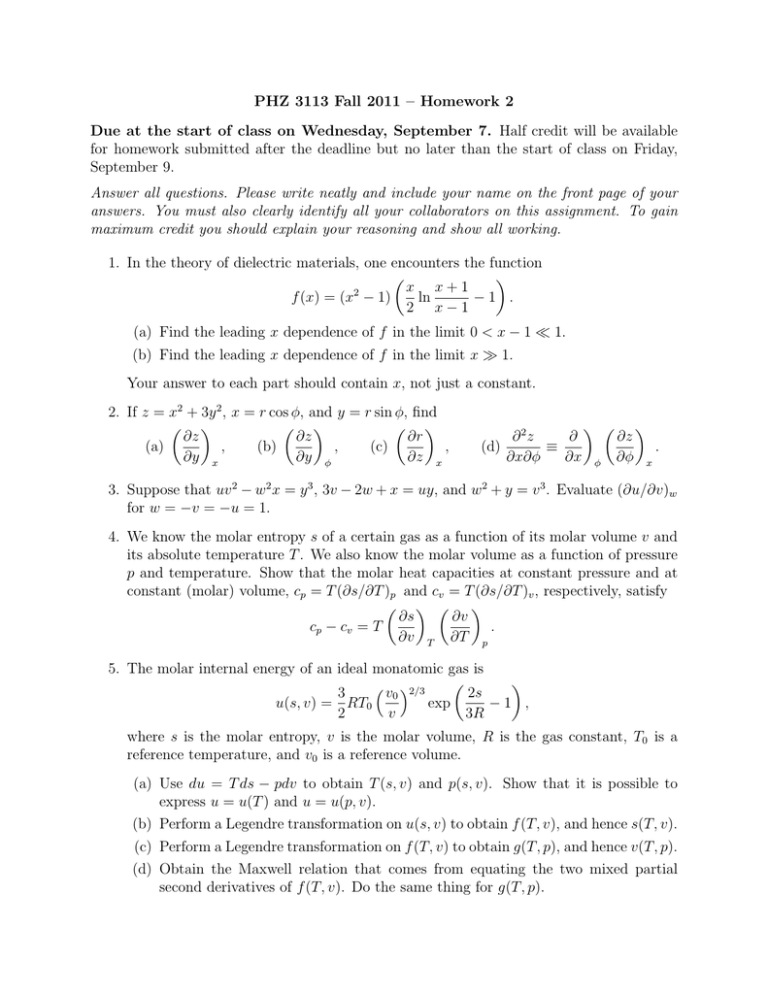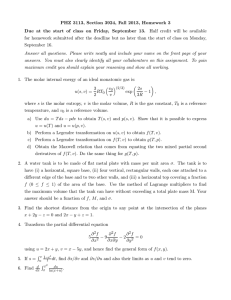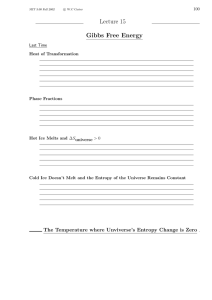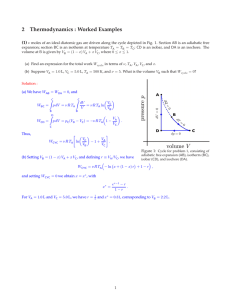PHZ 3113 Fall 2011 – Homework 2 September 9.
advertisement

PHZ 3113 Fall 2011 – Homework 2 Due at the start of class on Wednesday, September 7. Half credit will be available for homework submitted after the deadline but no later than the start of class on Friday, September 9. Answer all questions. Please write neatly and include your name on the front page of your answers. You must also clearly identify all your collaborators on this assignment. To gain maximum credit you should explain your reasoning and show all working. 1. In the theory of dielectric materials, one encounters the function x x+1 2 f (x) = (x − 1) ln −1 . 2 x−1 (a) Find the leading x dependence of f in the limit 0 < x − 1 1. (b) Find the leading x dependence of f in the limit x 1. Your answer to each part should contain x, not just a constant. 2. If z = x2 + 3y 2 , x = r cos φ, and y = r sin φ, find ∂z ∂z ∂r (a) , (b) , (c) , ∂y x ∂y φ ∂z x ∂ ∂ 2z ≡ (d) ∂x∂φ ∂x φ ∂z ∂φ . x 3. Suppose that uv 2 − w2 x = y 3 , 3v − 2w + x = uy, and w2 + y = v 3 . Evaluate (∂u/∂v)w for w = −v = −u = 1. 4. We know the molar entropy s of a certain gas as a function of its molar volume v and its absolute temperature T . We also know the molar volume as a function of pressure p and temperature. Show that the molar heat capacities at constant pressure and at constant (molar) volume, cp = T (∂s/∂T )p and cv = T (∂s/∂T )v , respectively, satisfy ∂v ∂s cp − c v = T . ∂v T ∂T p 5. The molar internal energy of an ideal monatomic gas is v 2/3 3 2s 0 u(s, v) = RT0 exp −1 , 2 v 3R where s is the molar entropy, v is the molar volume, R is the gas constant, T0 is a reference temperature, and v0 is a reference volume. (a) Use du = T ds − pdv to obtain T (s, v) and p(s, v). Show that it is possible to express u = u(T ) and u = u(p, v). (b) Perform a Legendre transformation on u(s, v) to obtain f (T, v), and hence s(T, v). (c) Perform a Legendre transformation on f (T, v) to obtain g(T, p), and hence v(T, p). (d) Obtain the Maxwell relation that comes from equating the two mixed partial second derivatives of f (T, v). Do the same thing for g(T, p).






